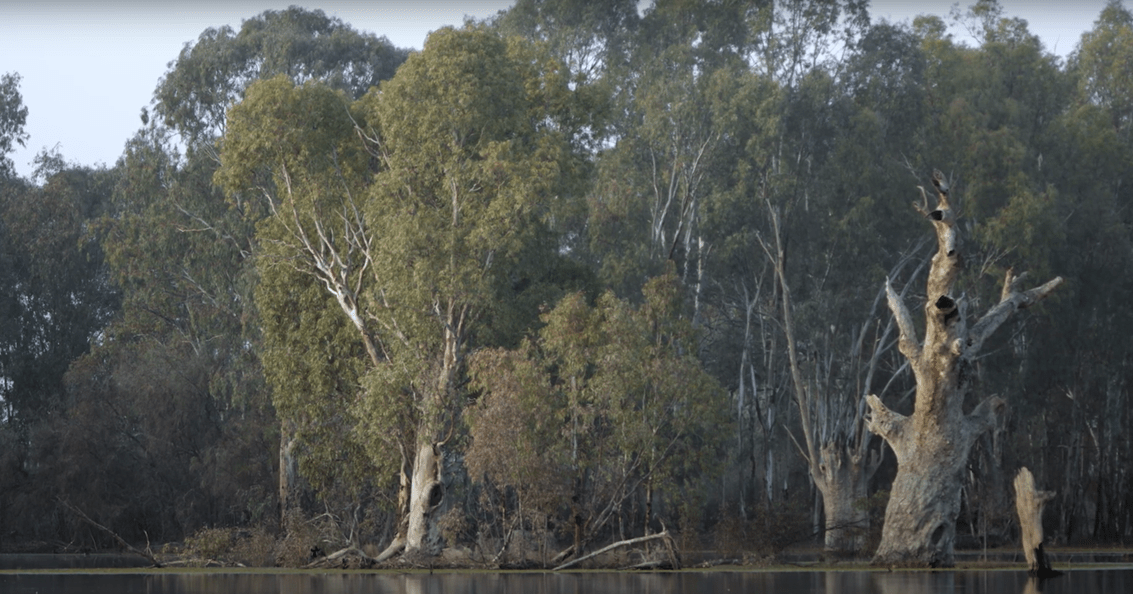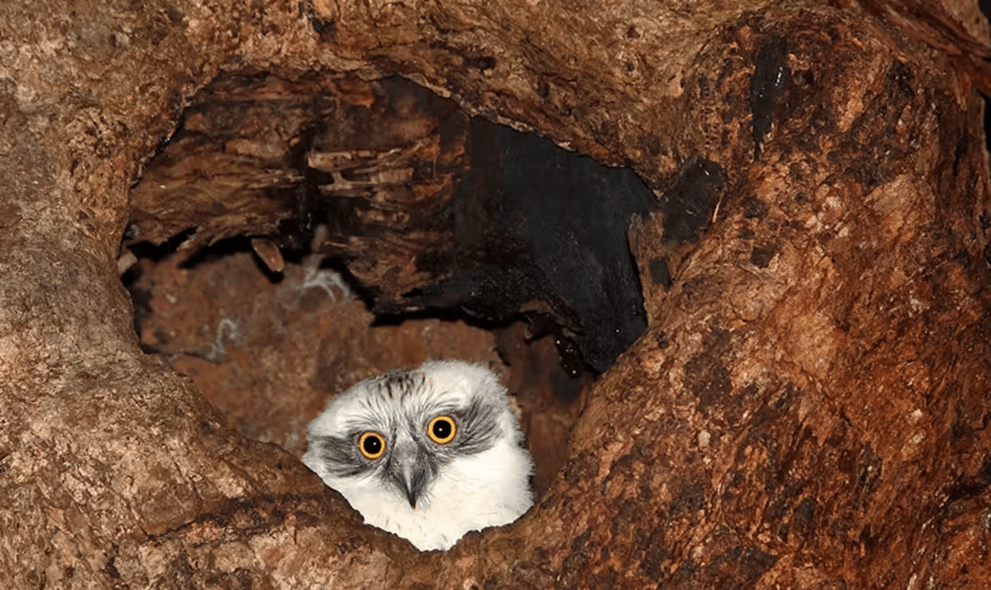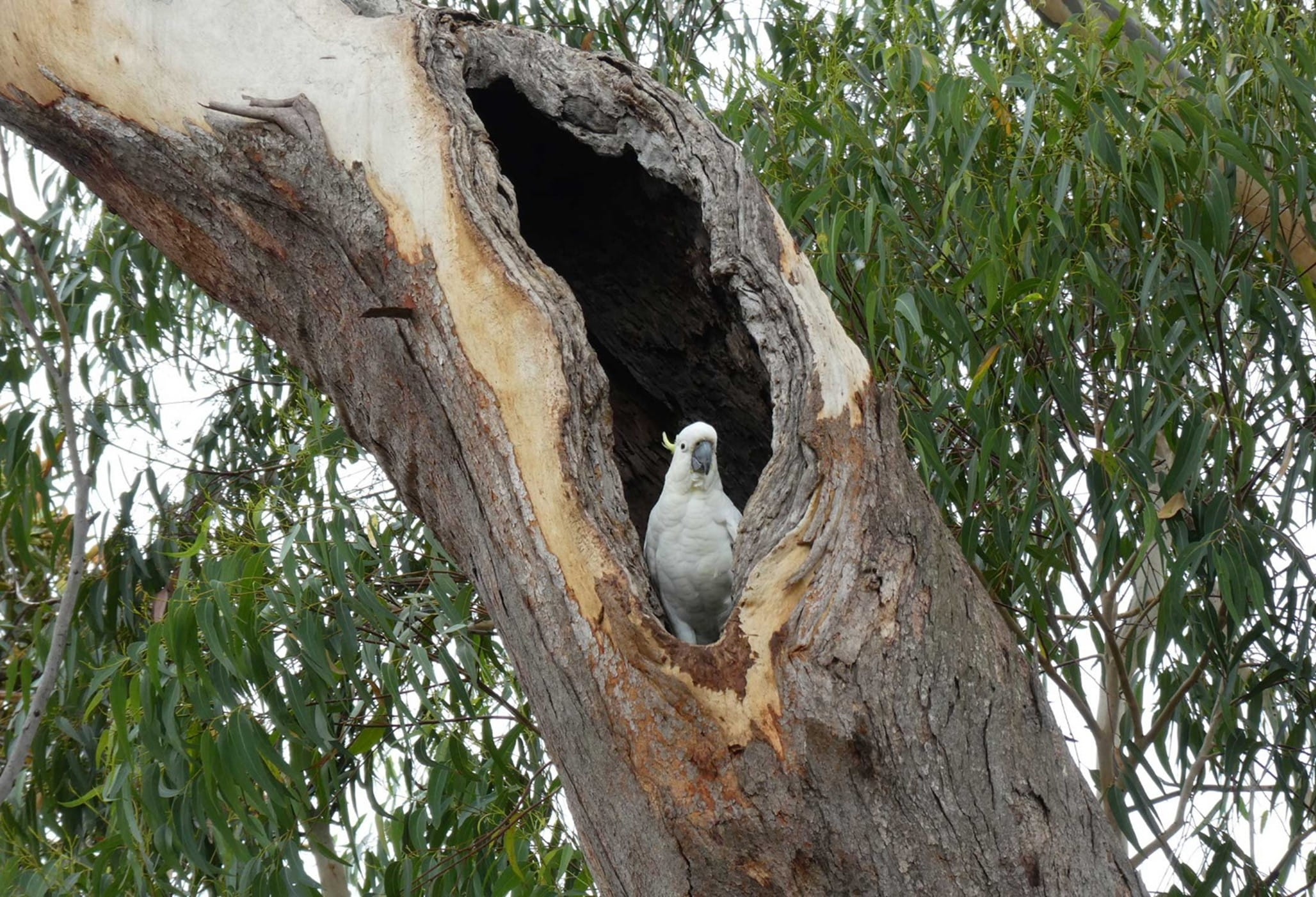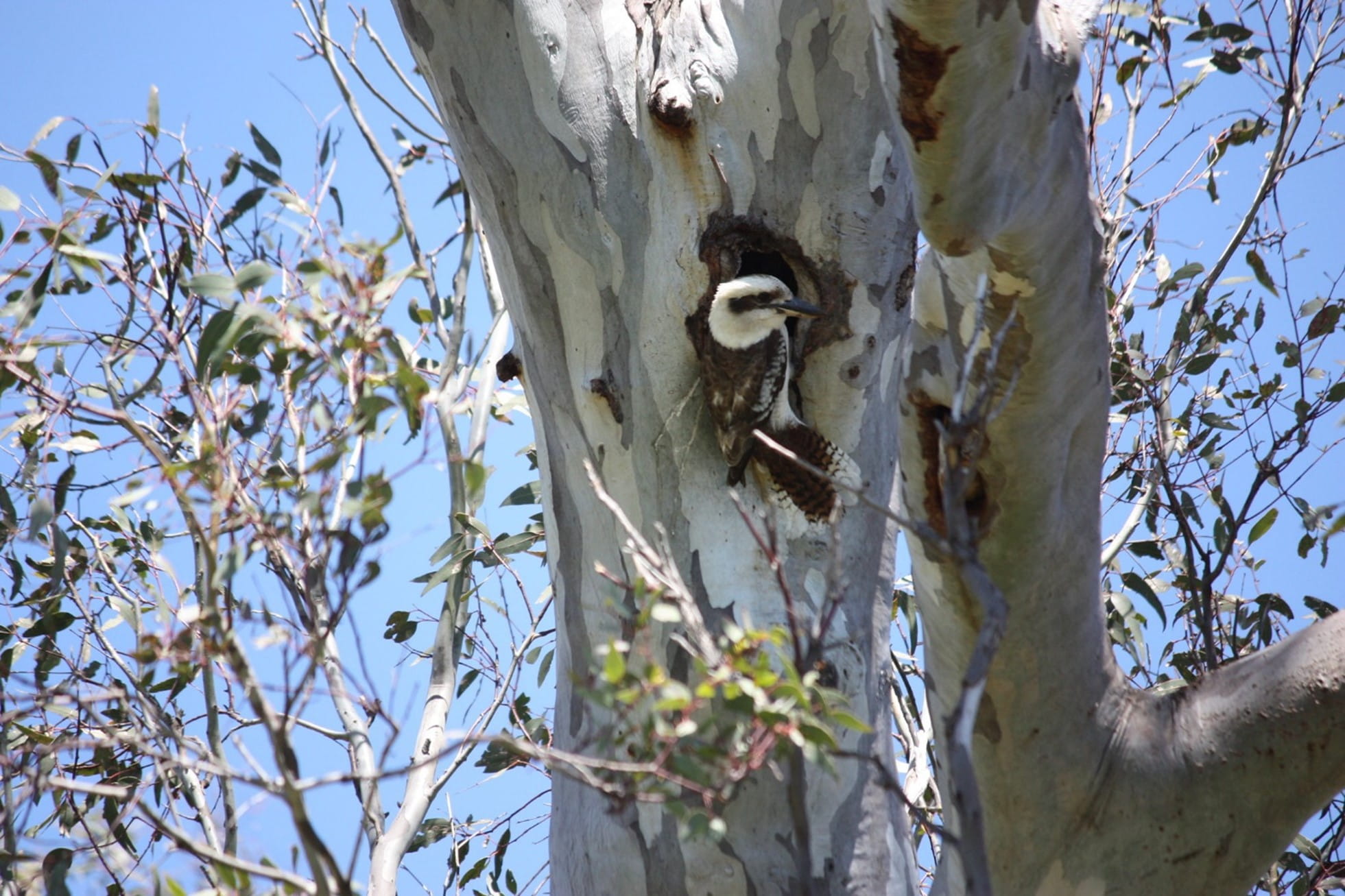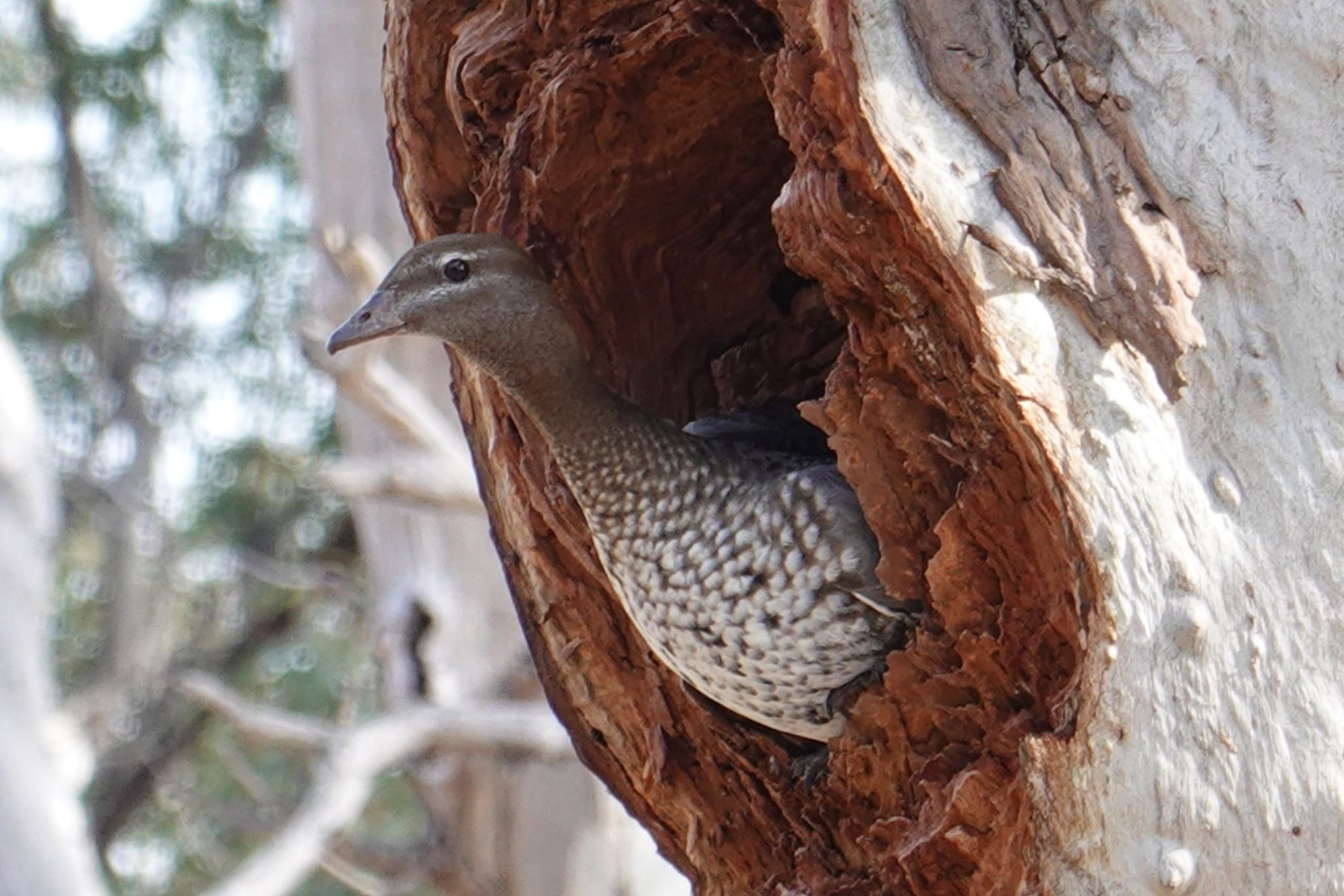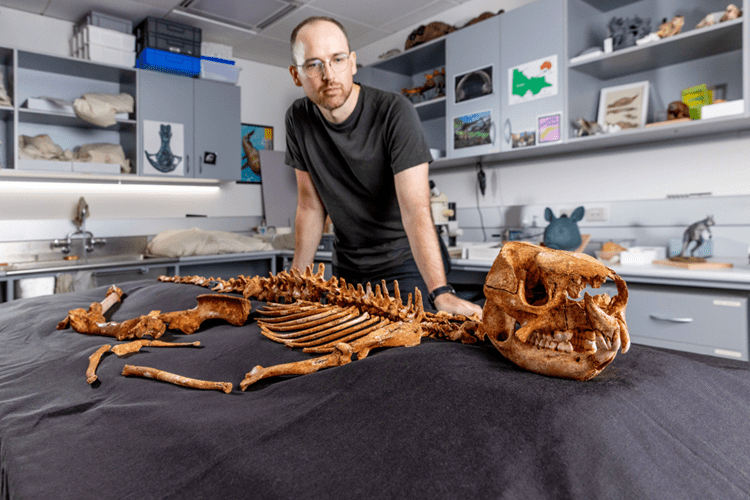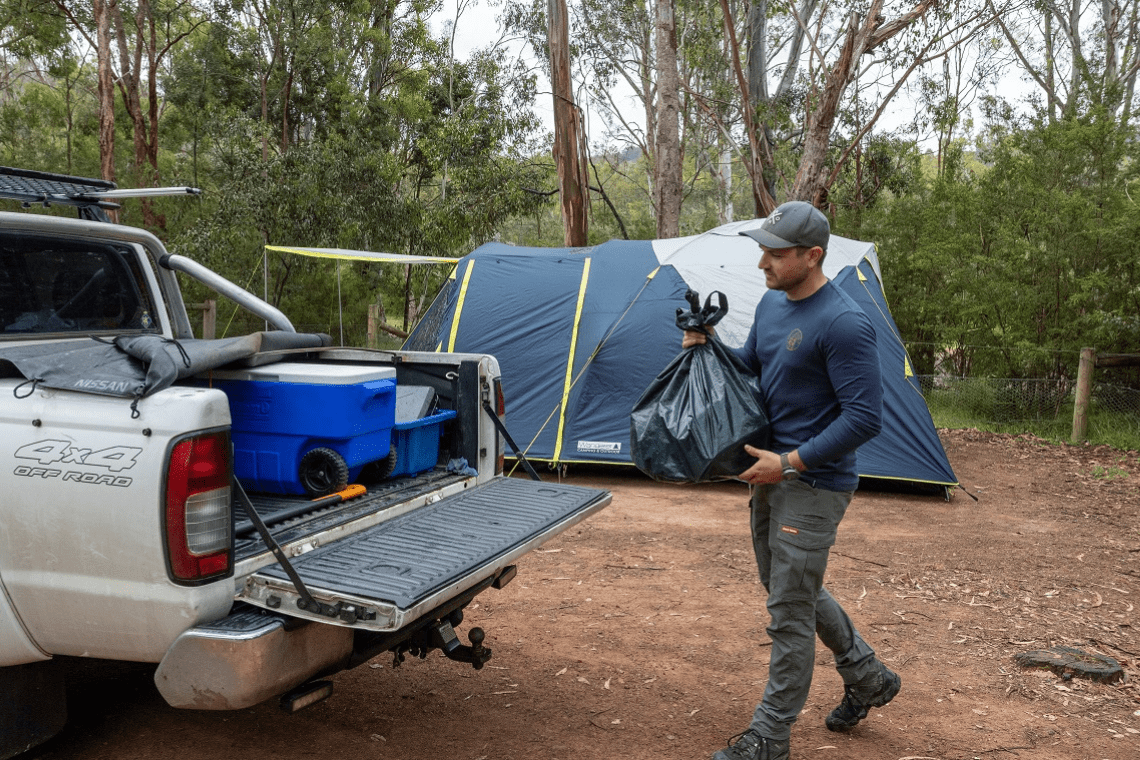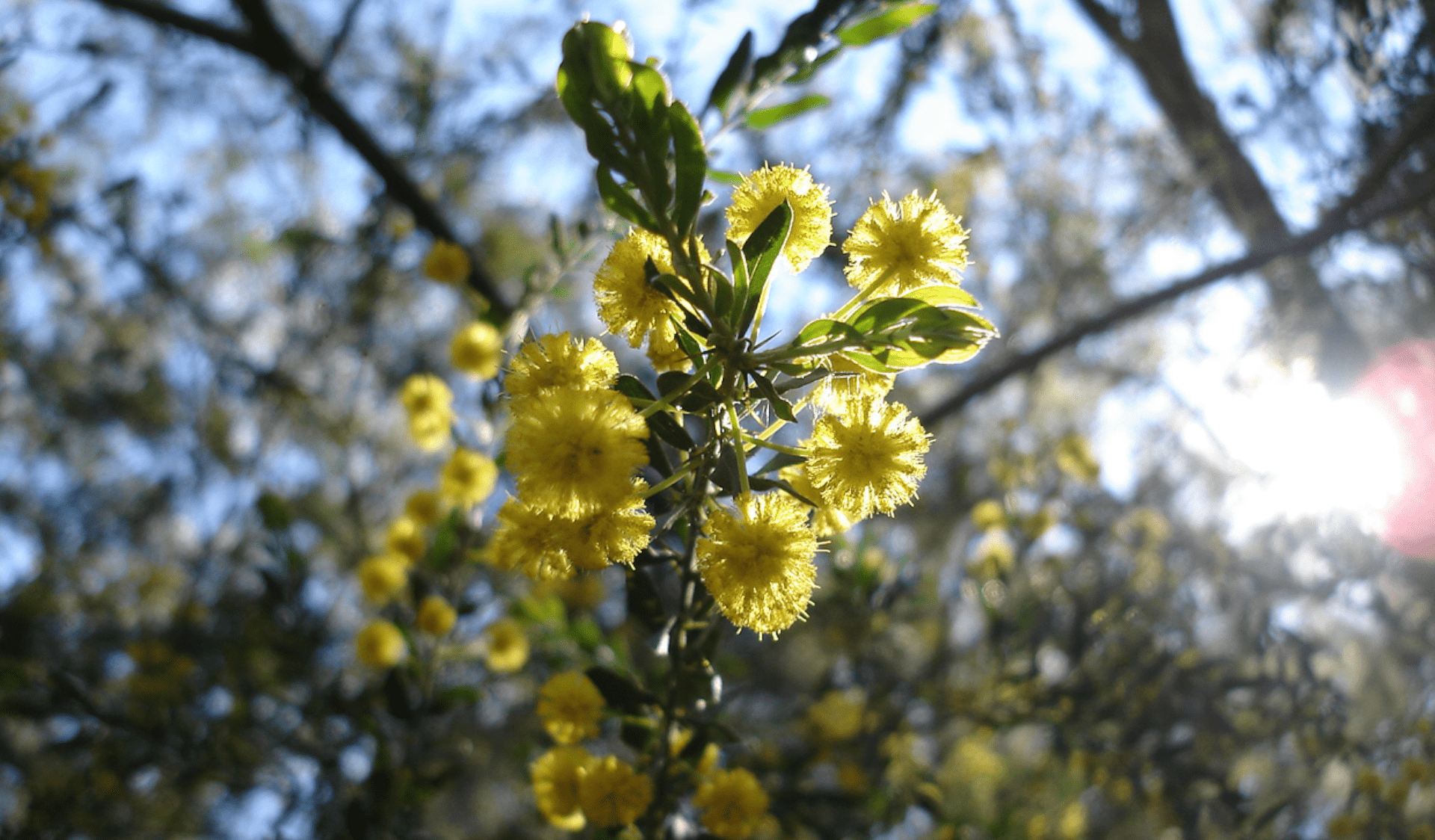Caring for River red gum Country: protecting an Australian icon
Monday 15 April, 2024
• River red gums act as the base of entire food webs in some areas of Victoria, especially in the northwest.
• Woody debris underneath their canopy contribute to their status as a biodiversity hotspot, but the amount of this debris has sharply declined in the last 200 years.
• River red gum forests in areas such as Hattah Kulkyne National Park are benefiting from recent wet conditions
River red gums, such as those seen in Hattah Kulkyne National Park, routinely shed bark and limbs. Image credit: Parks Victoria
Imagine a Humpback whale sticking out of the ground, with its 40-ton mass towering over other species in the landscape. That’s just how massive one River red gum can be. They’re critical components in many Australian landscapes, but their forests in northern Victoria have suffered significantly in the last 200 years.
In a 2008 report, the Victorian Environmental Assessment Council found that since European settlement, the amount of coarse woody debris (sticks, logs, and wood on the ground) in River red gum forests has gone from 125 tonnes per hectare to 20 tonnes per hectare. One of the main causes of this reduction is firewood collection. This has had a damaging effect on this habitat type over the last 200 years, but their long-standing stature continues to provide the base for an entire ecosystem to form around them.
“Mate, what’s so important about this tree?”
Hundreds of species rely on the River red gum as a biodiversity hotspot. This tree is pollinated by numerous insects (especially bees and butterflies), birds (from honeyeaters to parrots) and mammals (from tiny possums and gliders, and even flying fruit bats) that feed on nectar. But where they contribute their greatest diversity, is when a limb is amputated from the trunk.
For most organisms, losing an arm is usually disastrous. This isn’t the case for the majestic River red gum. Once the limb has fallen off, a small cavity will begin to form that is usually enlarged by insects or fungi.
Over the course of decades, a hollow will begin to form that will provide a refuge for parrots, cockatoos, lorikeets, owls, marsupial gliders, insectivorous micro-bats, possums, quolls, antechinus, ducks, kingfishers, carpet pythons, tree frogs, skinks, phascogales, lace monitors, kookaburras, owlet-nightjars, falcons, finches, robins, rosellas, swallows, thornbills, treecreepers, dunnarts, bush rats, bearded dragons and geckos (to name a few).
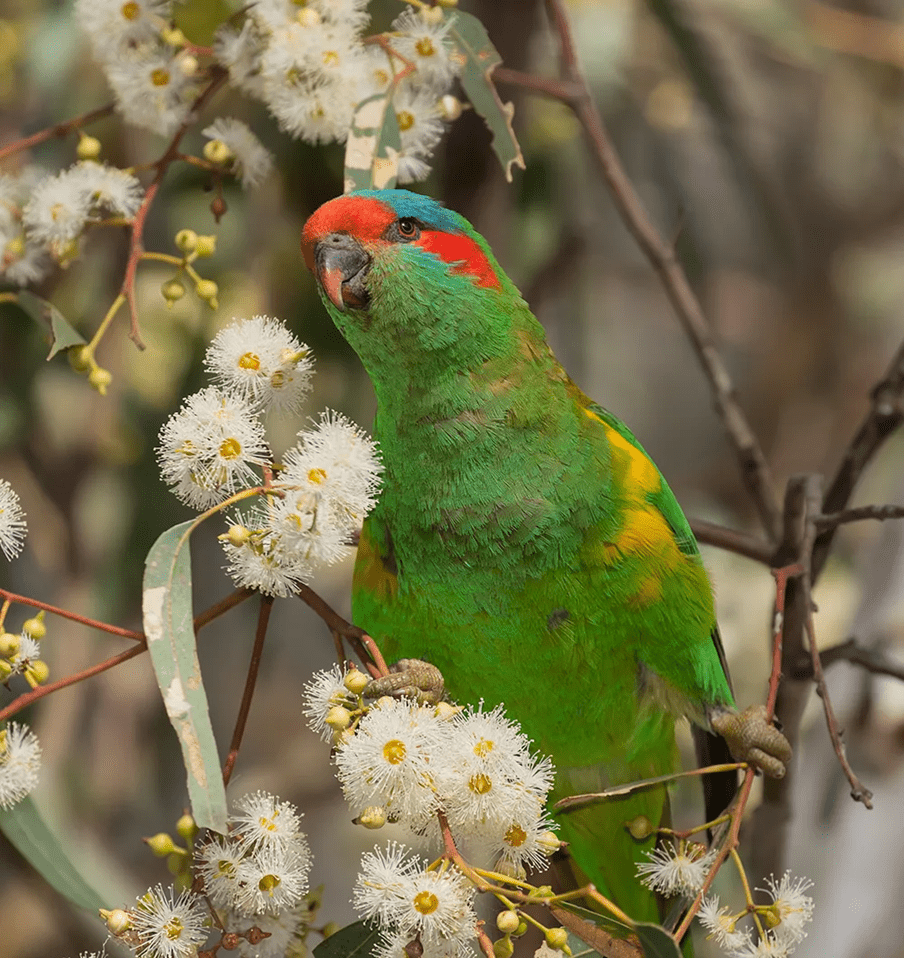
Musk Lorikeet feeding on River red gum flowers. Image credit: Geoff Park.
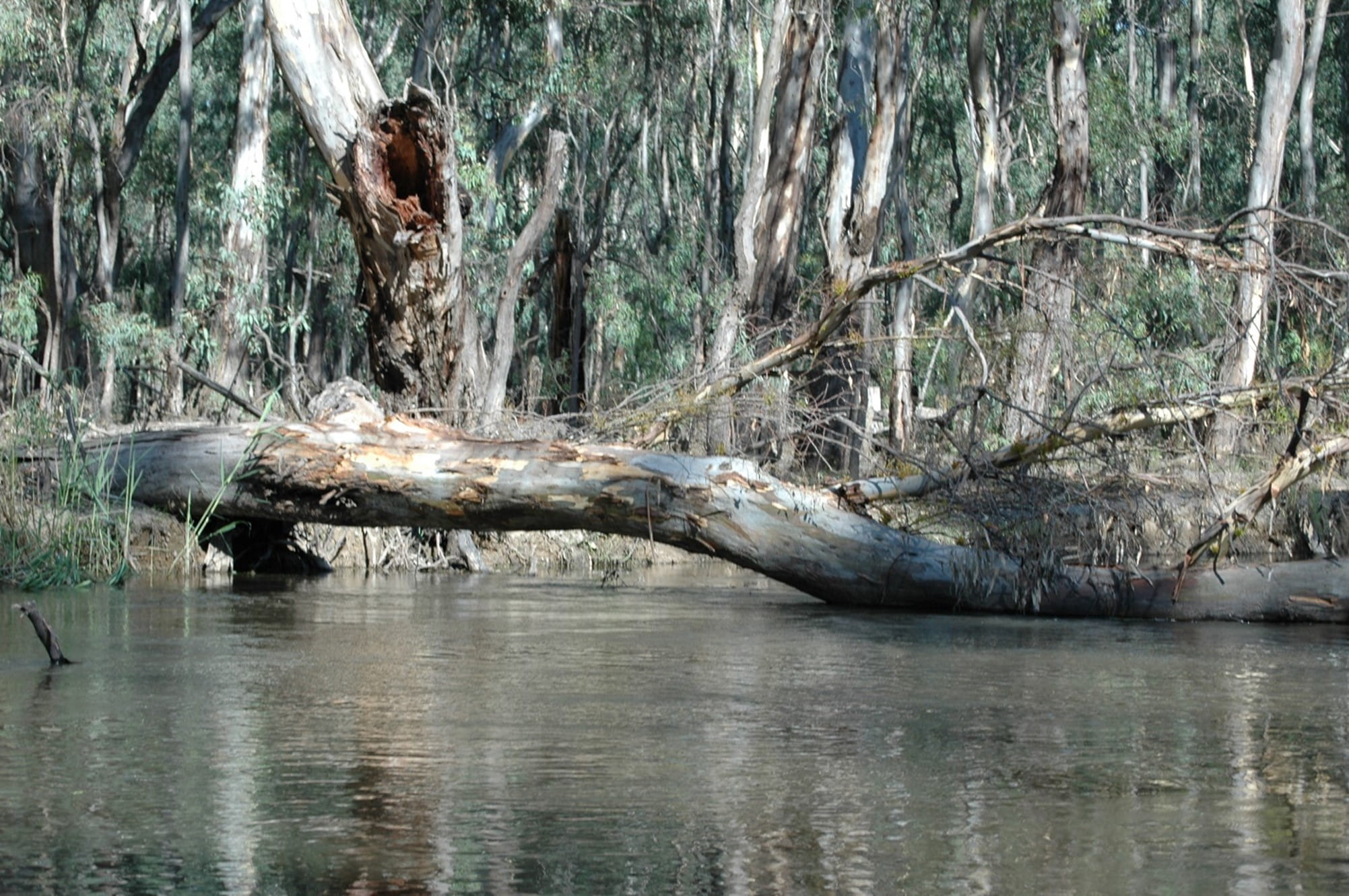
Large hollow formed by fallen River Red Gum tree trunk. Image credit: Patrick Pigott, Parks Victoria.
“It’s just a stick on the ground, what’s important about that?”
The shed leaves and limbs of a tree provide an important source of habitat for ground dwelling animals. Organisms which consume dead organic material, such as ants and worms, break down these nutrients which mulches the soil. Beetles also play an underrated role in these ecosystems and are often a fantastic food resource, but nothing compares to the nutrient giving role that fungi and other micro-organisms play.
River Red gums are usually found near to rivers and floodplains. Their size can alter the waterflow of entire tributaries, as their enormous root systems seek out water. When this woody debris falls into water, another group of animals take advantage of this unique habitat.
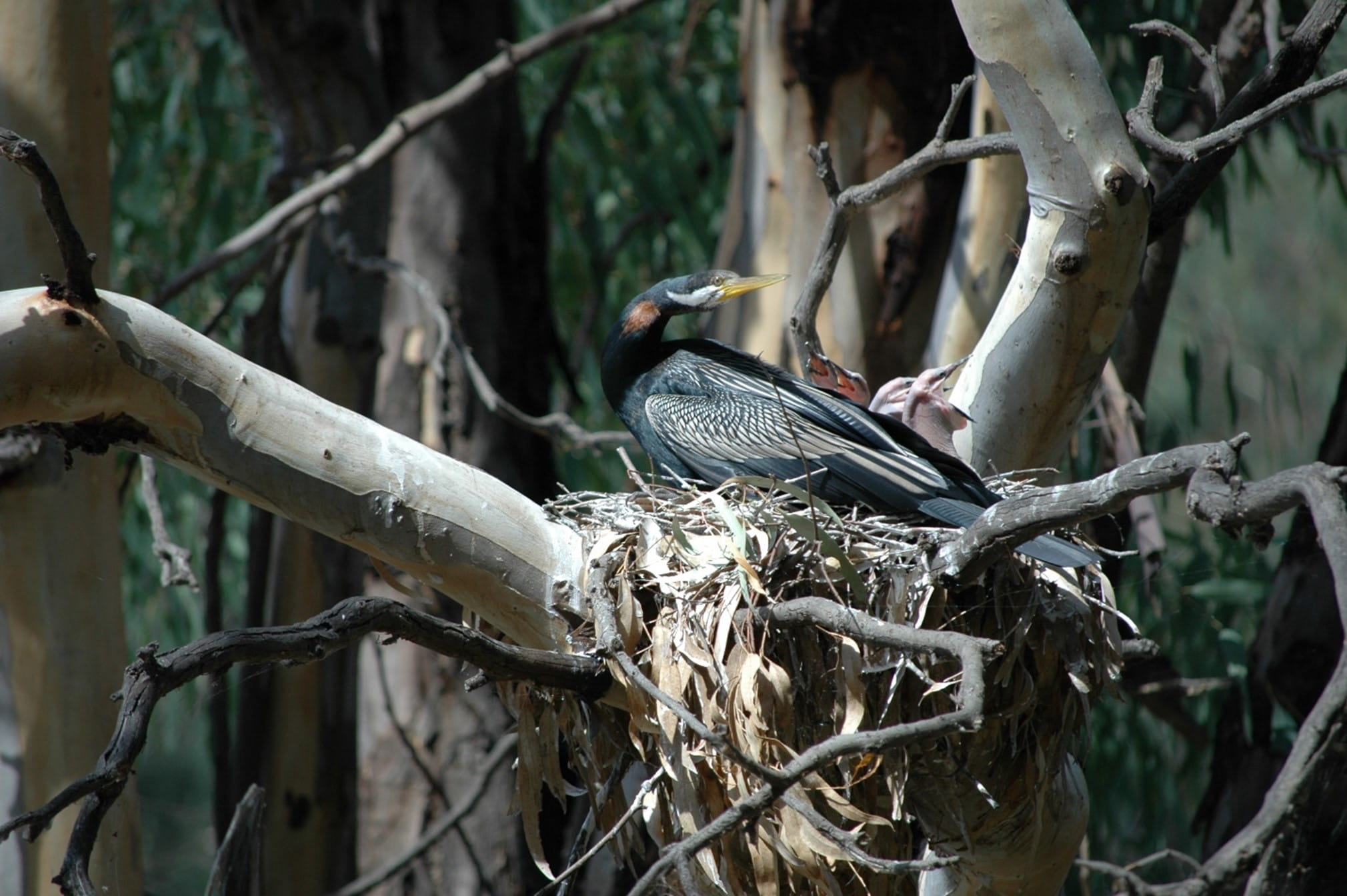
River red gum with a nesting Australian Darter. Look at all those “sticks” you’d otherwise find on the ground: it’s the perfect nesting material. Image credit: Patrick Pigott, Parks Victoria
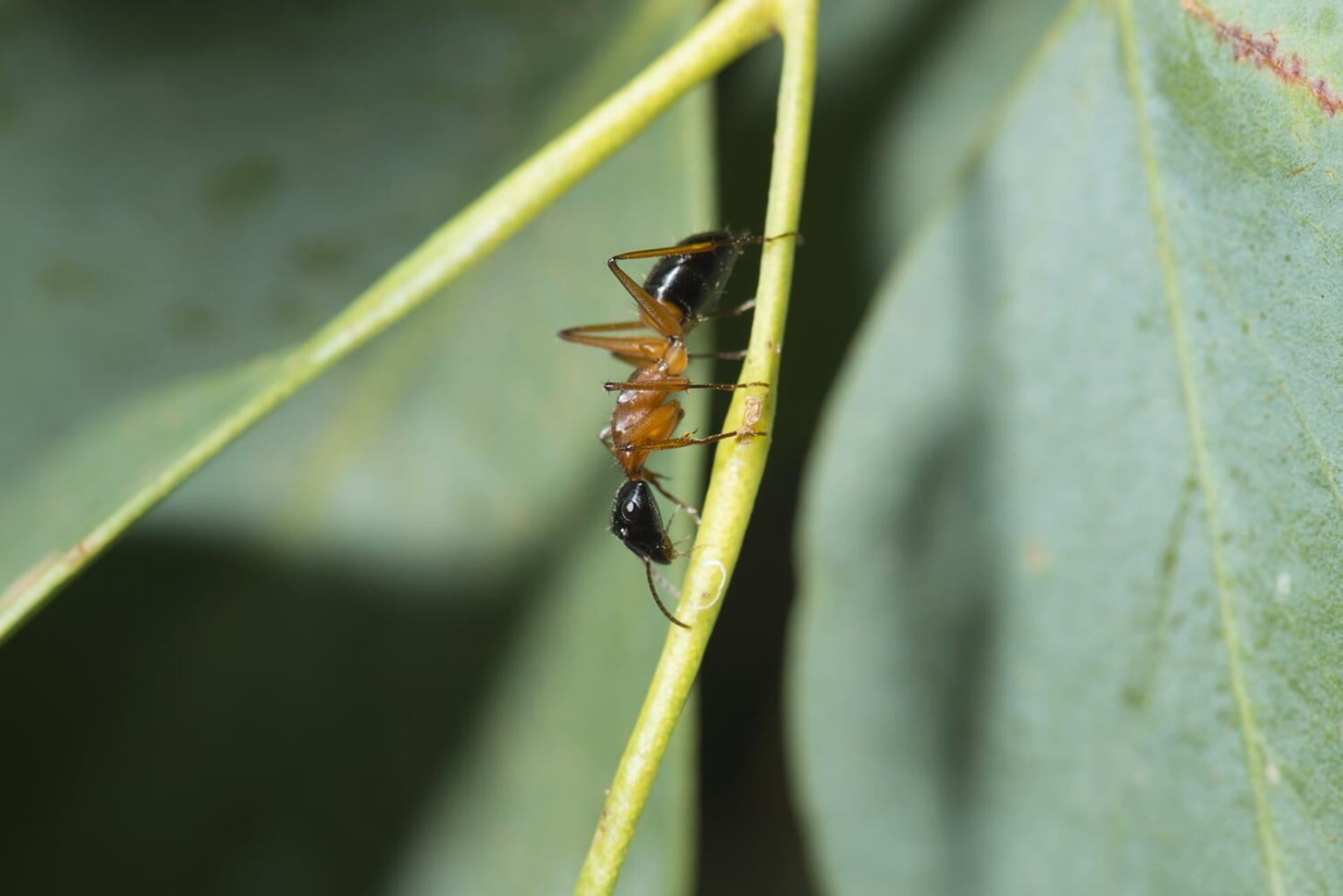
Sugar ants are often found on River red gums. Image credit: Museums Victoria.
The benefit of “snags”
Fallen tree limbs (snags) are important breeding habitat for fish such as Murray cod, Golden perch, and River blackfish. They might be annoying when fishing, but yabbies, freshwater turtles, dragonflies, shorebirds, waterbirds, gudgeons, galaxiids, catfish, large freshwater crayfish, platypus, and rakali all use these dead sticks.
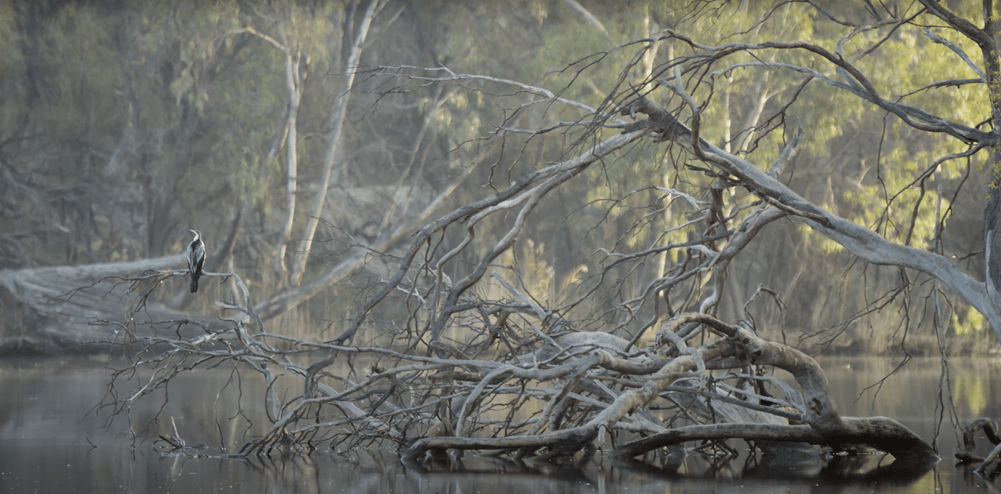
An Australasian darter sits atop of woody debris. Image credit: Parks Victoria.
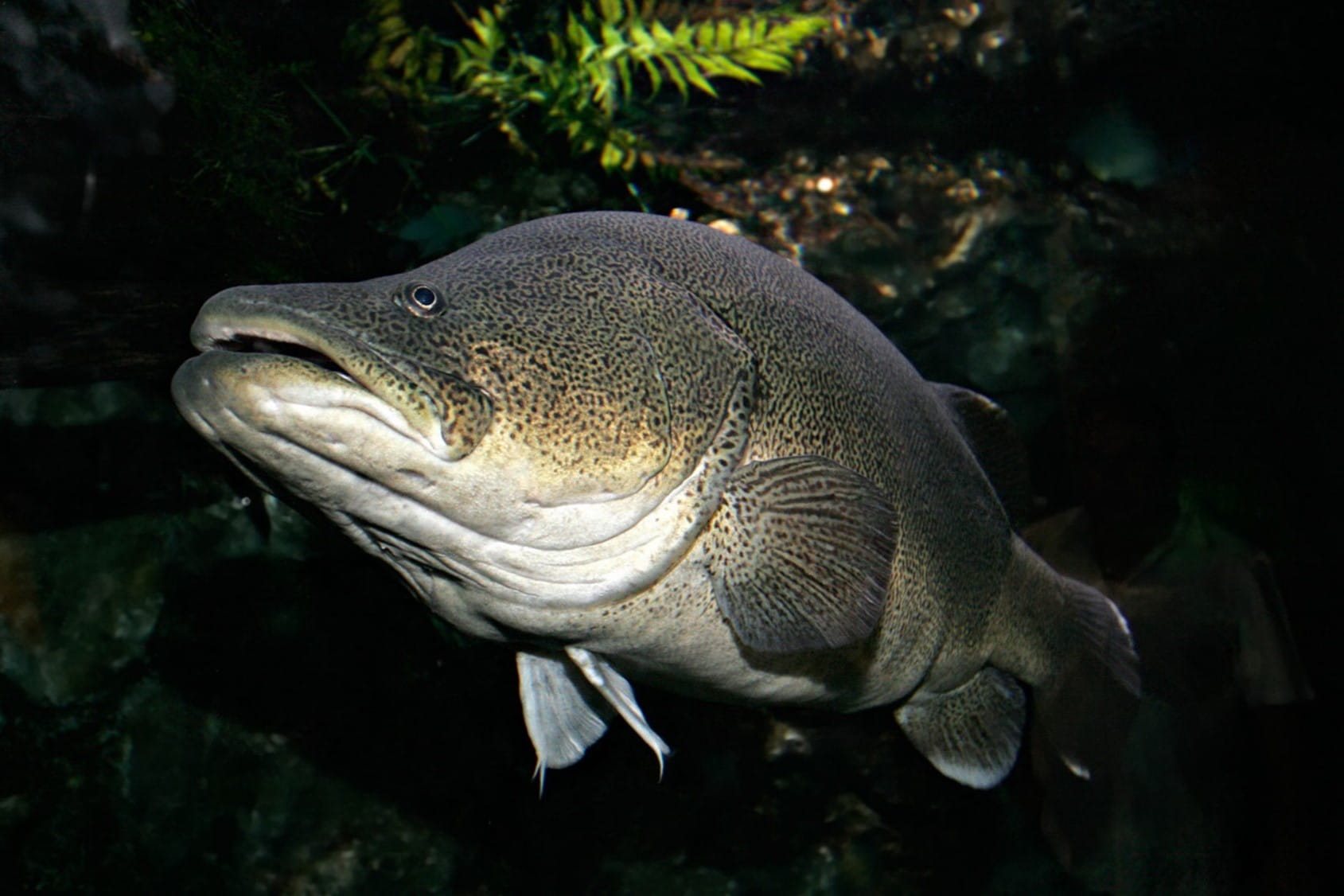
The vacant expression of a Murray cod. These fish needs snags for spawning their eggs. Image credit: SEALIFE Melbourne Aquarium.
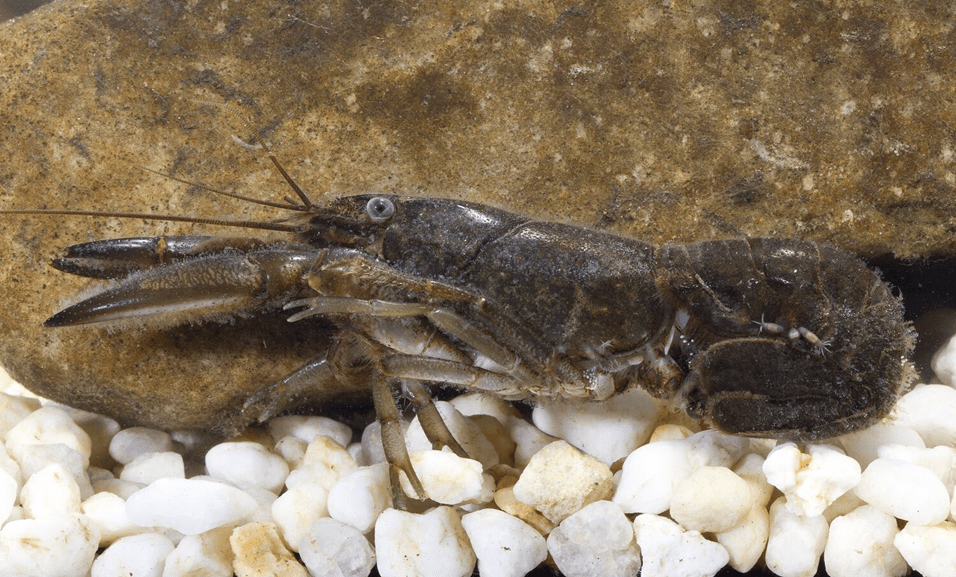
Even the prolific Yabby needs woody debris. You'll often find them hiding under submerged logs. Image credit: Museums Victoria.
Flooding the River red gum forests in Hattah Kulkyne National Park
At over 50,000 hectares, Hattah–Kulkyne National Park is the oldest national park in the northwest of Victoria. Over the last few years, this park has seen several environmental benefits following wetter conditions in southeastern Australia. Higher than average rainfall in late 2022 resulted in large-scale natural flooding of the Murray River floodplain, filling the creeks and wetlands of the Hattah Kulkyne National Park and adjacent public reserves. This flooding was the largest since 1956 and is estimated to have inundated a staggering 16,842 hectares.
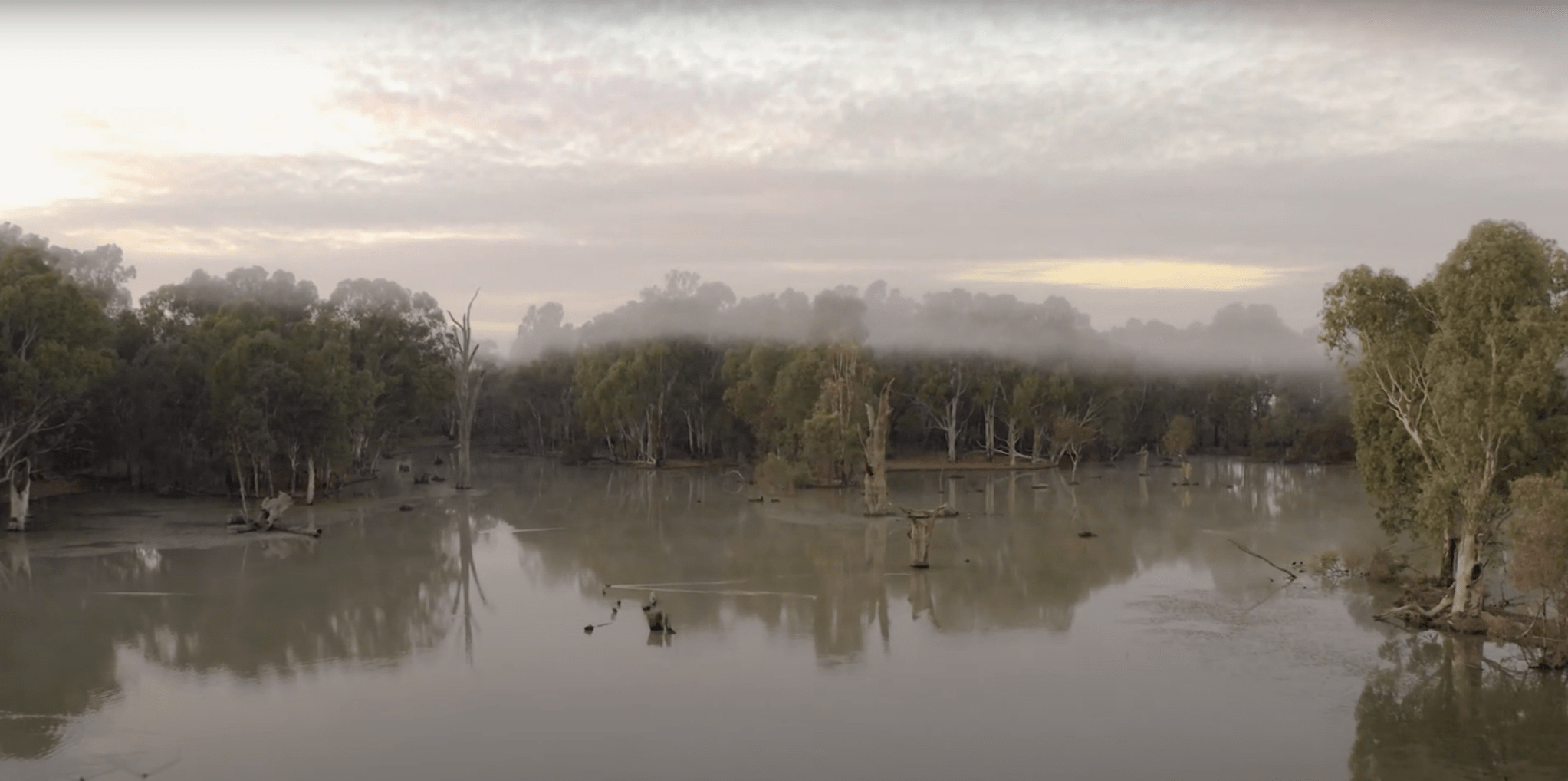
The Ngintait, Njeri Njeri, Latje Latje, Wadi Wadi, Wamba Wamba, Tati Tati, Wergaia, Yulupna, Barapa Barapa, Yorta Yorta, Waywurru, Dudoroa, Bangerang and Taungurung are the First Peoples of the rivers and plains of the River red gum Parks. Image credit: Parks Victoria.
This flooding may enable regeneration, but if these floods are too frequent, it can kill off some of this new growth. The giant, water-seeking roots of the Red gum could even change the flow of creeks and lakes without these occasional deluges, but large-scale flooding also results in movement and accumulation of woody debris, which is important for native fauna.
For more information on the importance of woody debris and old tree growth in our park estates, check out the webpage “using firewood”.


